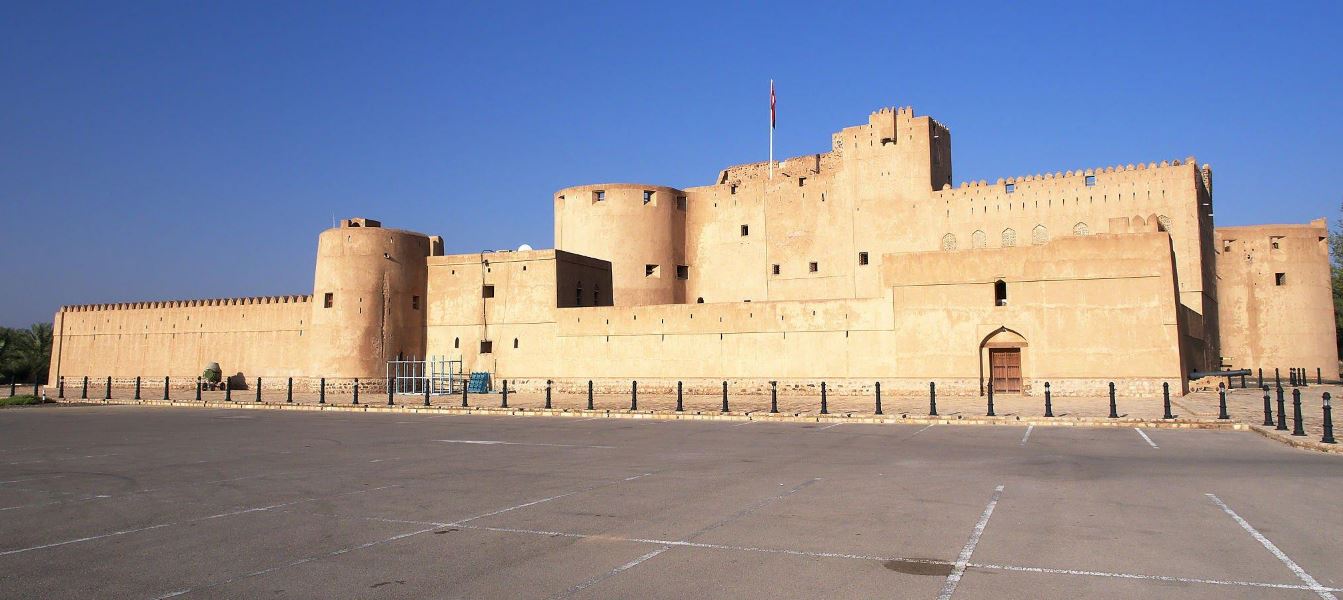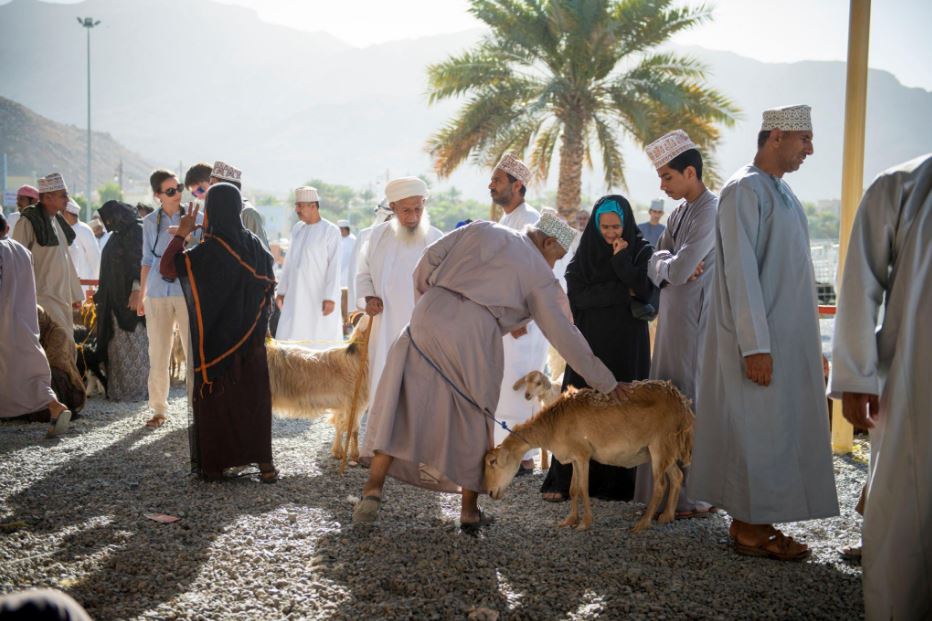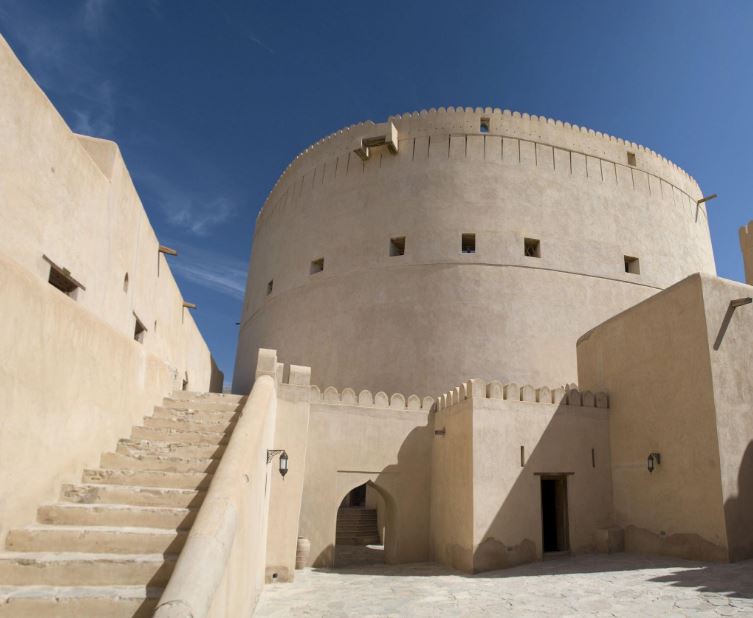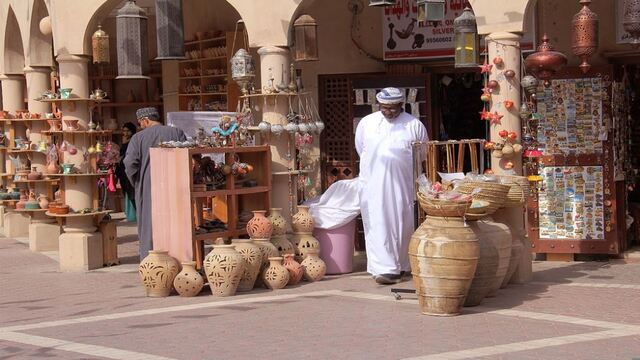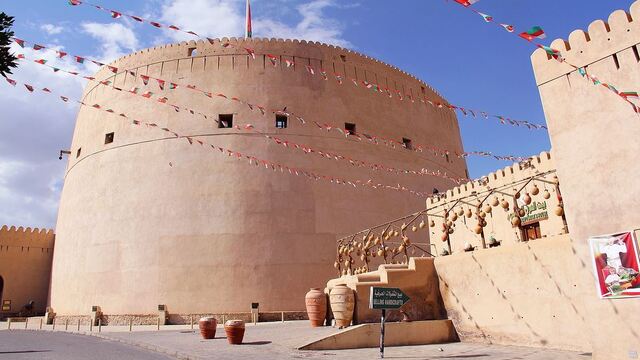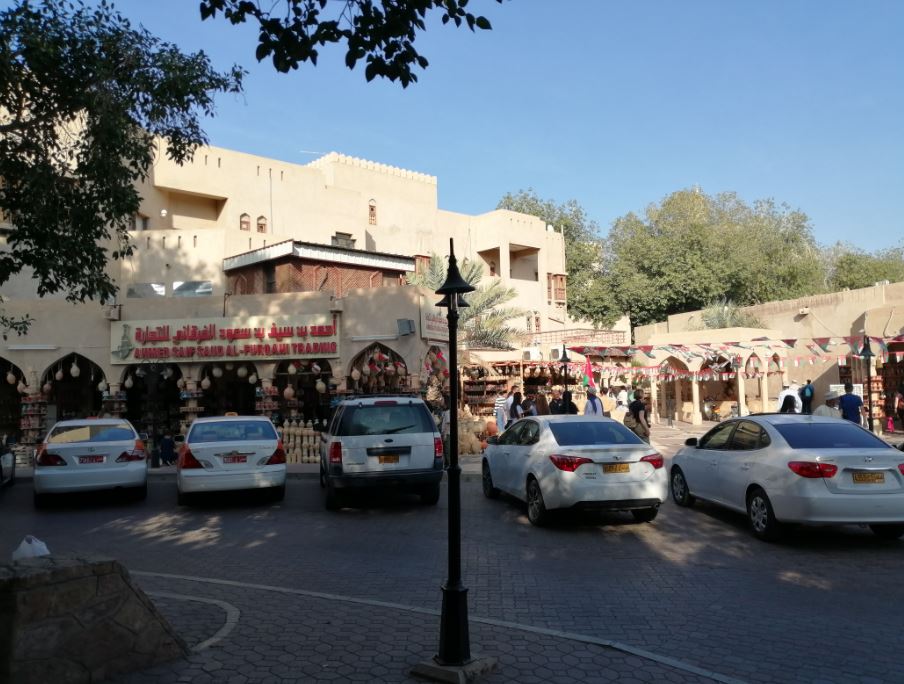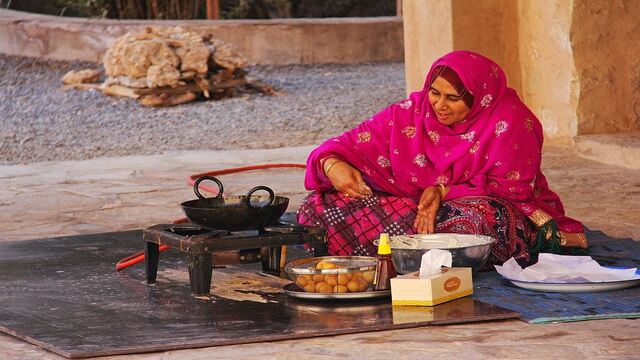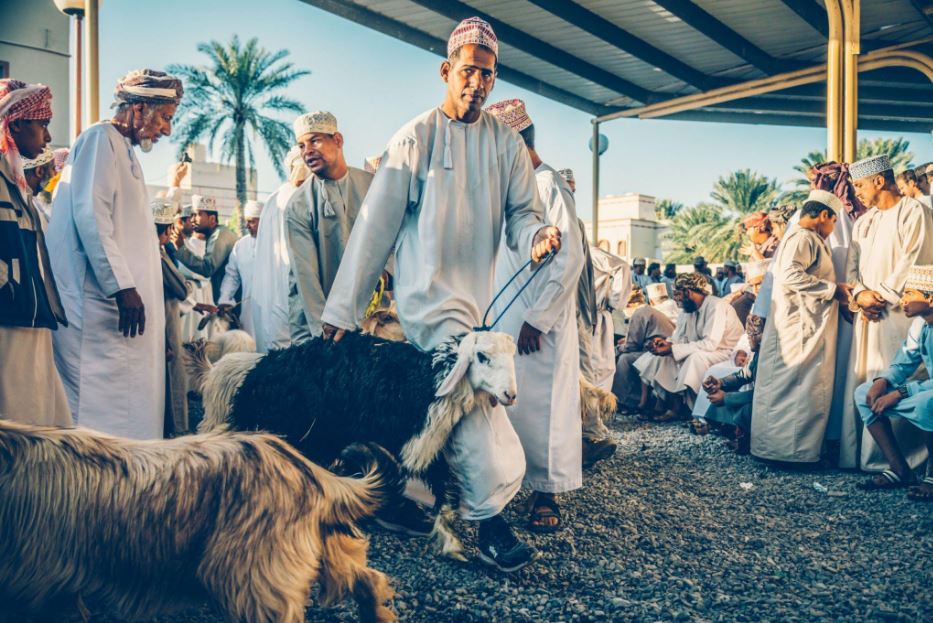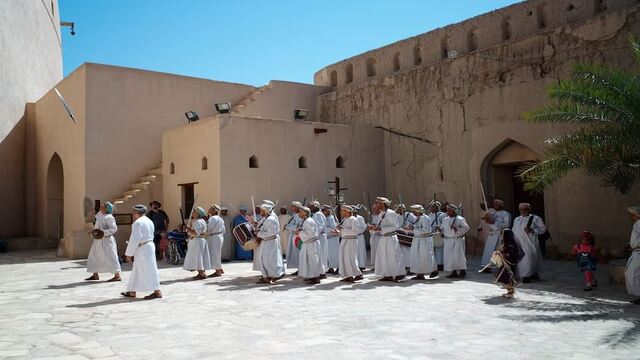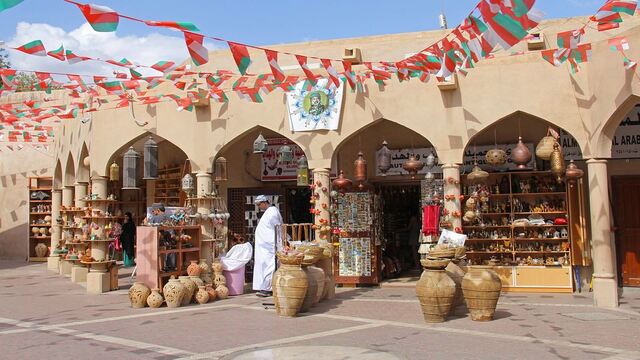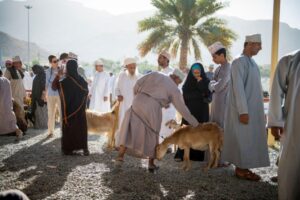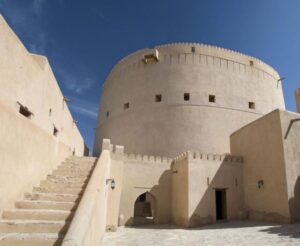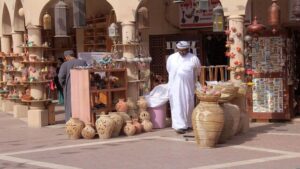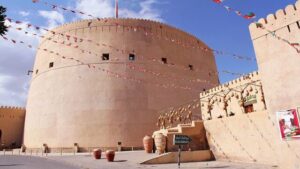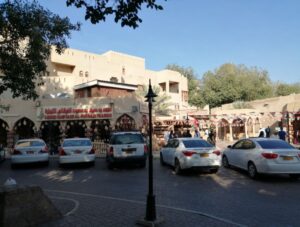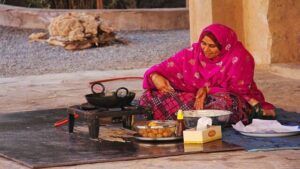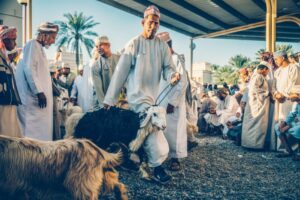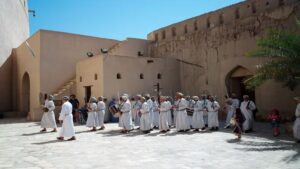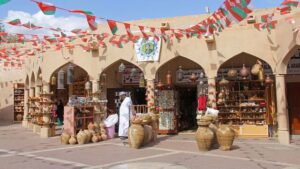Nizwa, one of Oman’s ancient cities, is situated on a plain within the Al-Hajar Mountain chain. Today modern Nizwa is a diversified location with cultural, historical, and agricultural areas of interest. It was once a halt on old caravan paths and a center for art, education, religion, and commerce.
Nizwa Fort :- The most well-known and popular fort and landmark in Oman are Nizwa Fort. Apart from its twin, the Bahla Fort, this fort from the seventeenth century isn’t yet a constituent of the World Heritage Site By UNESCO. It compensates for its absence of visibility with research projects and displays designed to shed light on the city’s illustrious past. The inscriptions and the fort engraved inside provide an exciting insight into the castle’s significance and history.
Jabreen Castle :- Jabreen Castle rises majestically from the neighboring plain without opposition. Even though there is an abundance of defenses, Jabreen is among the most charming and well-preserved fortresses out there. Hence it’s worth the struggle to scale another series of battlements. You’ve to head towards the flagpole for a bird’s-eye glimpse of the courtyard with honeycomb windows at the keep’s center. The spaces here have unique colored ceilings. In contrast to other castles and forts in Oman, Jabreen Castle was constructed in 1675 by Imam Bil-Arab Bin Sultan and served as a significant hub of education for Islamic law, medicine, and astrology. Within the extensive battlements, there’s a great deal to understand about the castle’s history.
Bahla Fort:- Bahla Fort, among the biggest in Oman, now towers over the expansive contemporary community of Bahla following years of repair. It was constructed by the Bani Nabhan clan, which ruled the region from the twelfth to the fifteenth century, and was designated a Unesco World Heritage Site in 1987. Although this massive fort has a couple of interpretive panels, its expansive vista from the castle walls and size are its main draws. A beautiful illustration of a medieval Islamic society built over the Falaj is the neighborhood’s mud-brick homes (irrigation channels). The winding roads here are best explored on foot.
Falaj Daris :- The Falaj Daris is perhaps Oman’s biggest Falaj and a World Heritage Site in Nizwa, giving the city the water it needs for its farmlands and crops. Locals frequently visit the park created on a little fraction of the Falaj! This old Falaj is thought to date back to 2500 BC! Hence, While you’re on vacation in Nizwa, the Falaj is an excellent location to unwind and relax!
Wadi Ghul :- It’s been said that Wadi Ghul is Oman’s Grand Canyon. This canyon is known for its secluded, beautiful hiking routes and is situated over the Al Hajar mountains. Renting a 4×4 shall be the best option, but you may also explore the Ghul on foot for further thorough exploration. As you glance down, take in the expansive panoramas of the deep, narrow canyons and the mountains. Try the “Balcony Walk” by foot for an adrenaline rush; it’s an exhilarating hike as your face the peaks from Wad.
Tanuf Ruins :- Near Nizwa and Bahla, in between Oman’s two main cities, is a little village called Tanuf. The Tanuf ancient ruins and their label of drinking water are well known. Groundwater from Wadi Tanuf is used for packaging and obtaining a facility’s “Tanuf” brand of water. The settlement’s ruins were abandoned after the destruction and left to rot during the War at Jabal Akhdar.
Nizwa Souq :- Nizwa Souq, which is close to the Nizwa fort, will offer you a taste of the past of Oman because most of its buildings still feature the country’s historical buildings. Based on what you wish to purchase, the souq is divided into separate sections; during the mornings, you can witness locals purchasing meat and vegetables. The remaining of its souq offers distinctive mementos like fresh dates, lamps, and taqiya headgear. The typical Omani souq marketplace is the most incredible location to observe how the community market functions.
Birkat Al Mouz:- In Oman’s Nizwa province, in the Ad Dakhiliyah district, is the historic hamlet of Birkat Al Mouz. It also houses the reconstructed fort known as Bait al Redidah and functions as the gateway to the Wadi Al-Muaydin on Jebel Akhdar’s southern edge. We highly suggest you make a pit break at the Birkat Al Mouz remains on your approach to Jebel Akhdar since the scenery from this village will transport you to a different era. You would also learn about the way that these native inhabitants resided in these mountains, which were bordered by plantations. Nizwa Souq, which is close to the Nizwa fort, will offer you a taste of the past of Oman because most of its buildings still feature the country’s historical buildings. Based on what you wish to purchase, the souq is divided into separate sections; during the mornings, you can witness locals purchasing meat and vegetables. The remaining of its souq offers distinctive mementos like fresh dates, lamps, and taqiya headgear. The typical Omani souq marketplace is the most incredible location to observe how the community market functions.

